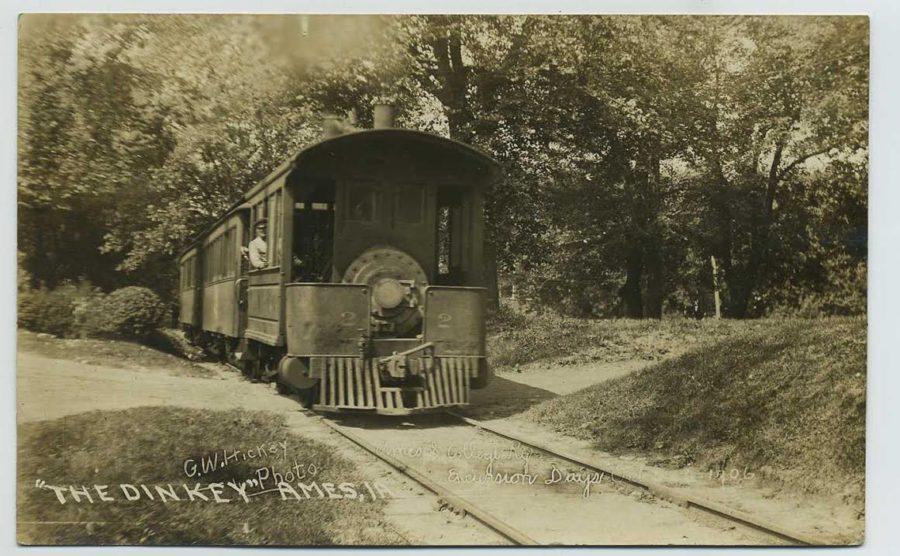Dinkey train transforms Ames travel
June 3, 2014
Editor’s note: In celebration of the 150th anniversary of our city, the Daily will highlight prominent figures, places and events in Ames’ history each week.
Traveling across Ames was not always as easy as jumping on a CyRide bus. The first students of Iowa Agricultural College and Model Farm, commuting the few miles between the city of Ames and campus was a struggle.
Students and staff of the early college had to travel by foot or horse across dirt roads to reach the school each day. As the years went on and the population of both Iowa State and Ames grew, the need for a better mode of transportation became more apparent.
The problem continued until 1890 when a group of locals thought up a solution to the problem, according to the Ames Historical Society. The group formed a cooporative and sought approval to establish a regular form of transportation for students and Ames residents.
According to the Ames Historical Society website, the company would be known as the Ames and College Railway. The original proposal was for a “horse-car railway” system between Ames and the Iowa Agricultural College.
The new company was granted approval to build a new transportation system in Ames and on campus but only if it used an engine-powered system instead of animal power. The company agreed and began construction on a new railroad.
The new railway was complete soon after and made its first run from downtown Ames to the heart of campus on July 4, 1891. The two trains that ran on this railroad eventually became known as the Dinkey and was the community’s first form of rapid transit.
The Dinkey ran every hour between 8 a.m. and 9 p.m. The train remained affordable for students throughout much of its existence. For almost three decades, a ride on the Dinkey cost only a nickel.
According to the Ames Historical Society’s website, the name Dinkey could have originated as a nickname for the train’s small engine or “a corruption of the term ‘donkey’ engine, a type of locomotive used for hauling and shunting rail cars.”
Once the Dinkey arrived on campus, the original route went behind the Farm House, in front of what is now Catt Hall and ended at a terminal just between Morrill Hall and the site where Beardshear is now located. This terminal came to be known as the Hub.
After altering the routes around campus a few times, the Dinkey train ended in 1929 and was replaced with a bus service. But that was not the end of the Dinkey’s legacy at Iowa State.
In 1920, the Hub was moved from the south side of Morrill Hall to the west side of Morrill Hall where it is located today. Once the Dinkey train service was suspended, the Hub was used as a post office and bookstore.
Once the bookstore moved out of the Hub to the Memorial Union in 1958, the Hub began serving snacks, according to the Ames Historical Society’s website. In 1963, snack service was expanded and a ticket office moved into the Hub.
Throughout the years, the Hub morphed from a train terminal into the cafe and study spot it is today.







